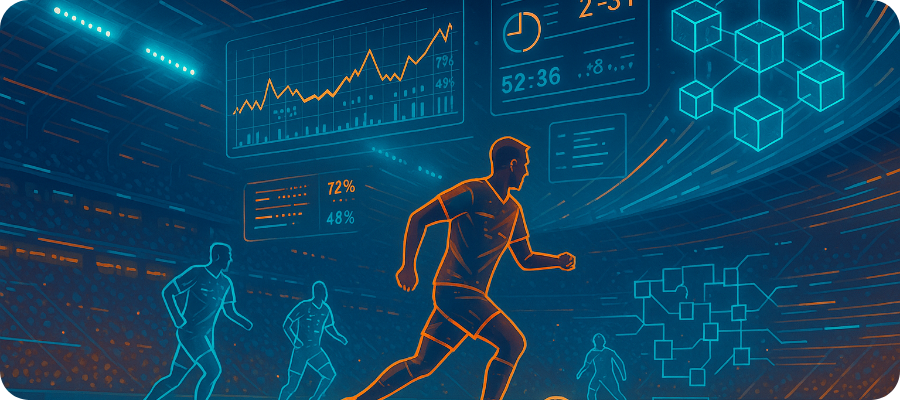[ez-toc]
Being a sports fan meant there is always a need to keep up with every update from your favorite sports team or player for fear that you might miss important games or critical sports match moments. From this need, many independent organizations and companies stepped up and offered real-time alerts, information, and even analysis to ensure fans are always in the loop.
Such capability is possible thanks to real-time database systems that make use of specialized multi-processors that can crunch performance metrics and other raw data. This is most useful especially during sports matches where every kick, tackle, penalty, and point is crucial.
Below, let us learn more about real-time data systems and the extent of its use in power sports platforms and how this advanced system can also be used in other industries such as crypto and gambling industries.
What Is Real-Time Data and Its Data Systems?
Real time data is the specific information that one can readily access as soon as it is acquired or created. Such type of data is the end result of timely data processing crucial for time-sensitive applications and real-time analytics.
Accordingly, real-time data is characterized to be immediately available, capable of being constantly updated, and valuable especially in crucial situations that depend on the most recent information.
In today’s data-driven world, it is undeniable that this type of data becomes essential to most industries. This type of data is best used in industries like healthcare where real-time records are essential to easily attend to patients, in banking where real-time logs are necessary, or in sports analytics where every moment counts in analyzing a player’s or a team’s performance.
Among all the industries listed, this data is most famously applied to sports analytics. With the constantly growing number of sports fans, it is understandable that not only organizations and sports teams acquire this type of data but even sports fans themselves to accurately predict team wins and improve their strategies when they dabble into friendly bets.
As sports fans eagerly check online sports betting Texas and other nearby areas, having the access to accurate real-time data allows them to make informed decisions leading to better betting experience. This experience is akin to seasoned sports bettors eagerly checking reputable review sites that recommend the best sportsbook, providing insights into odds, promotions, and strategic betting tips in real-time!
How Do Sports Platforms Use Real Time Data?
As we have already established that real-time data is essential in sports analytics, let us explore how most, if not all, sports platforms are using real-time data to their advantage.
- Improved and Enhanced Sports Broadcast Viewing
Real-time data allows sports platforms to provide an enhanced and more interactive viewing experience for sports fans. By utilizing real-time data, sports platforms can customize their broadcast graphics or provide viewers with additional context for a specific game.
These incorporated time data overlays or statistics flashed on screens helps players gain better insight especially when they are making friendly bets on the side.
- Support Advanced Analytics
Aside from enhanced sports viewing experiences, real-time data is also used by sports platforms to access up-to-date metrics and other relevant play data that allows coaches and analysts predict a team or player’s performance. With real-time data in their hands, they get to make informed decisions and easily modify strategies that can influence or affect the team’s performance.
- Elevate Fan Experiences
Lastly, access to real-time data by sports platforms allows them to elevate every sports fan’s experience.
If sports platforms leverage real-time data right, they can provide instant updates to fans such as game scores, player statistics, or game highlights. This immediate access to information allows fans to stay connected and engaged whether they are watching a game live or following with it remotely.
Additionally, real-time data can also be acquired by sports platforms by conducting live polls and real-time commentary to foster a sense of community among sports. By gaining their feedback regarding a game or a certain play, it makes sports fans feel as if they are part of an analysis process to determine which team wins or which player made the most score.
What Can Crypto Networks Learn From It?
Seeing how highly used real-time data is in the sports industry with mostly gaining advantages from it, this sends a valuable lesson for crypto networks to leverage similar technologies to enhance efficiency and transparency.
By using real-time data into their processes, crypto networks might be able to improve their transaction speed. With real-time data, they will be able to significantly reduce transaction latency, improving user experience for crypto users when they trade or transact with each other.
Additionally, use of real-time data into crypto networks may also help improve user engagement as crypto users will now be able to access essential crypto information that can make or break their trade. By adopting real-time data, crypto networks can provide real-time market data, alerts, or even personalize a crypto user’s insights in the most efficient manner.
